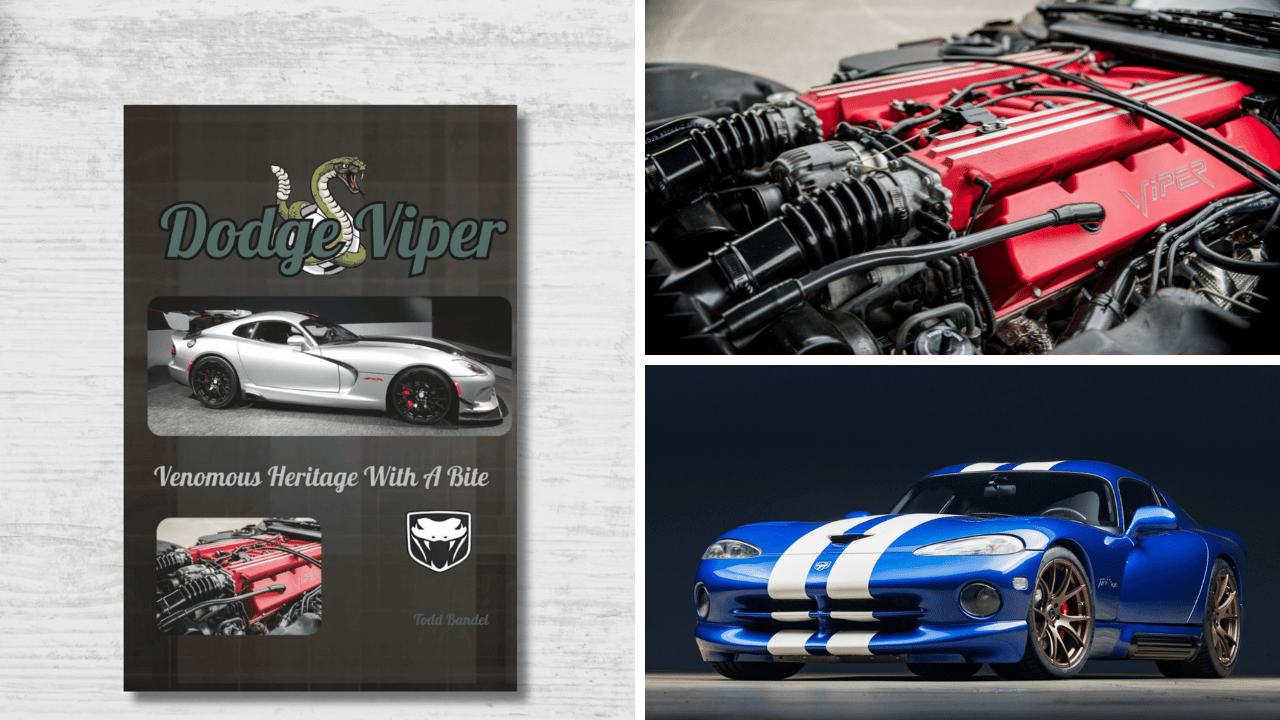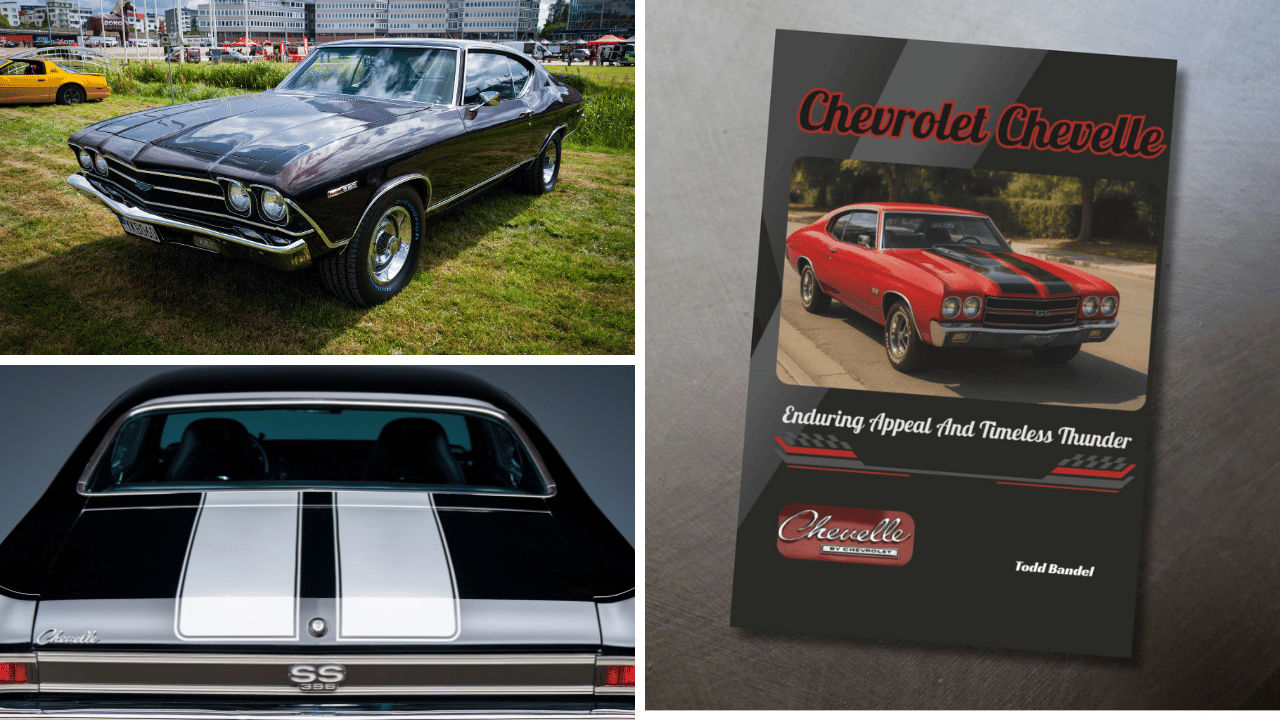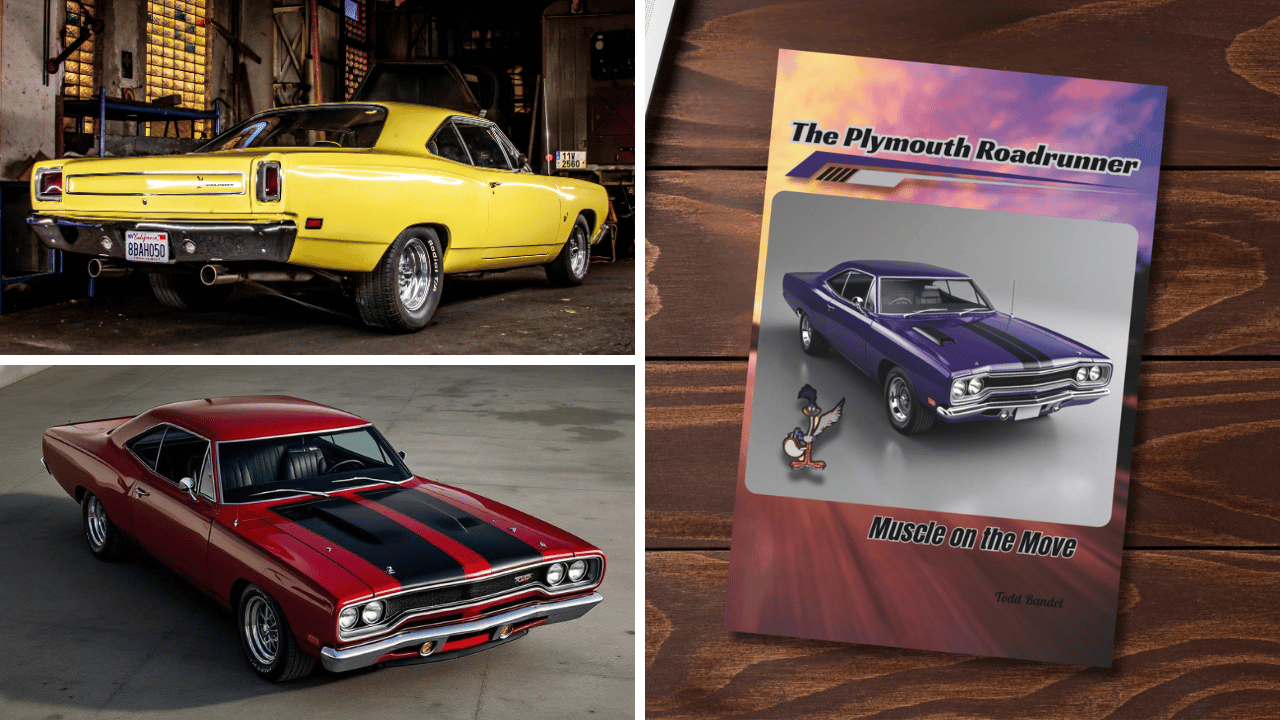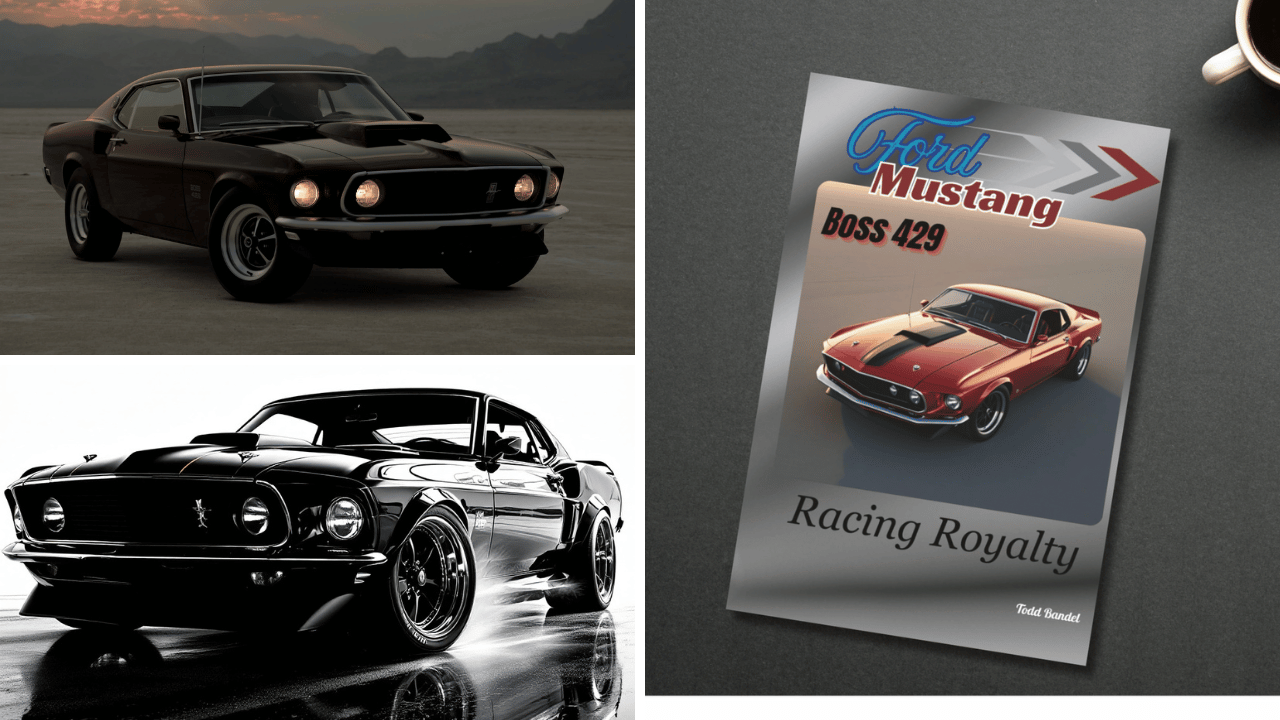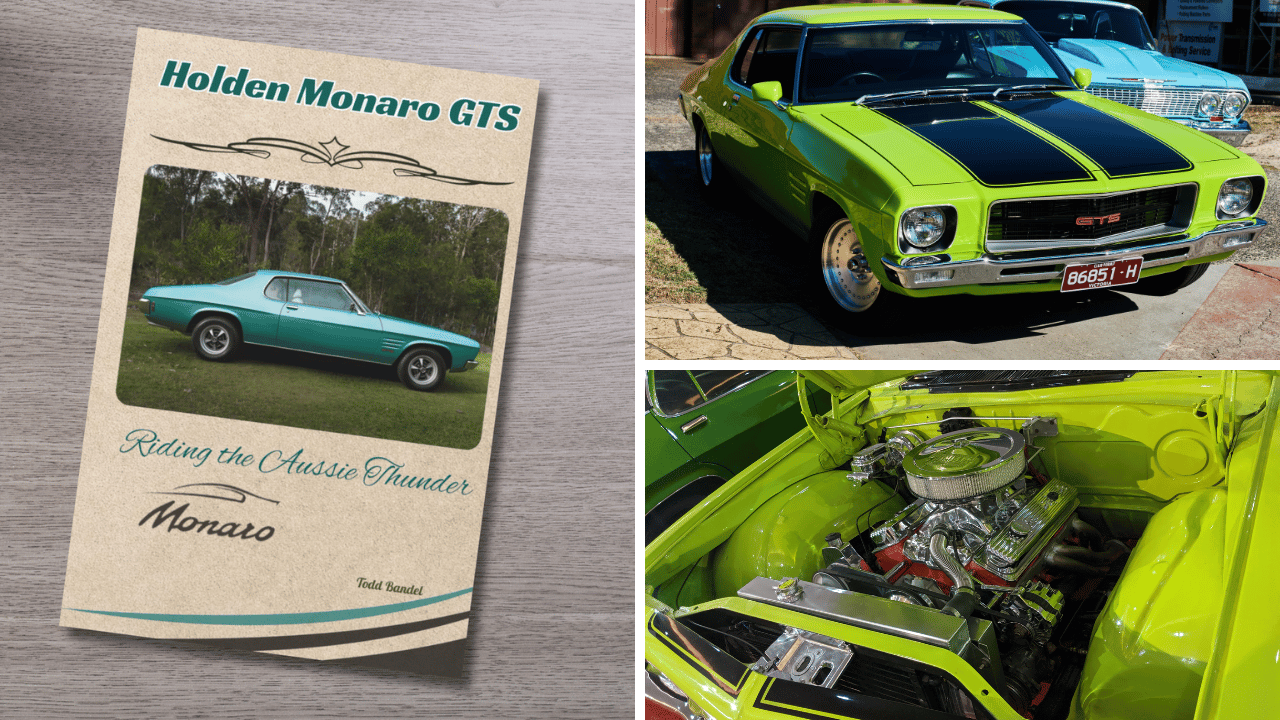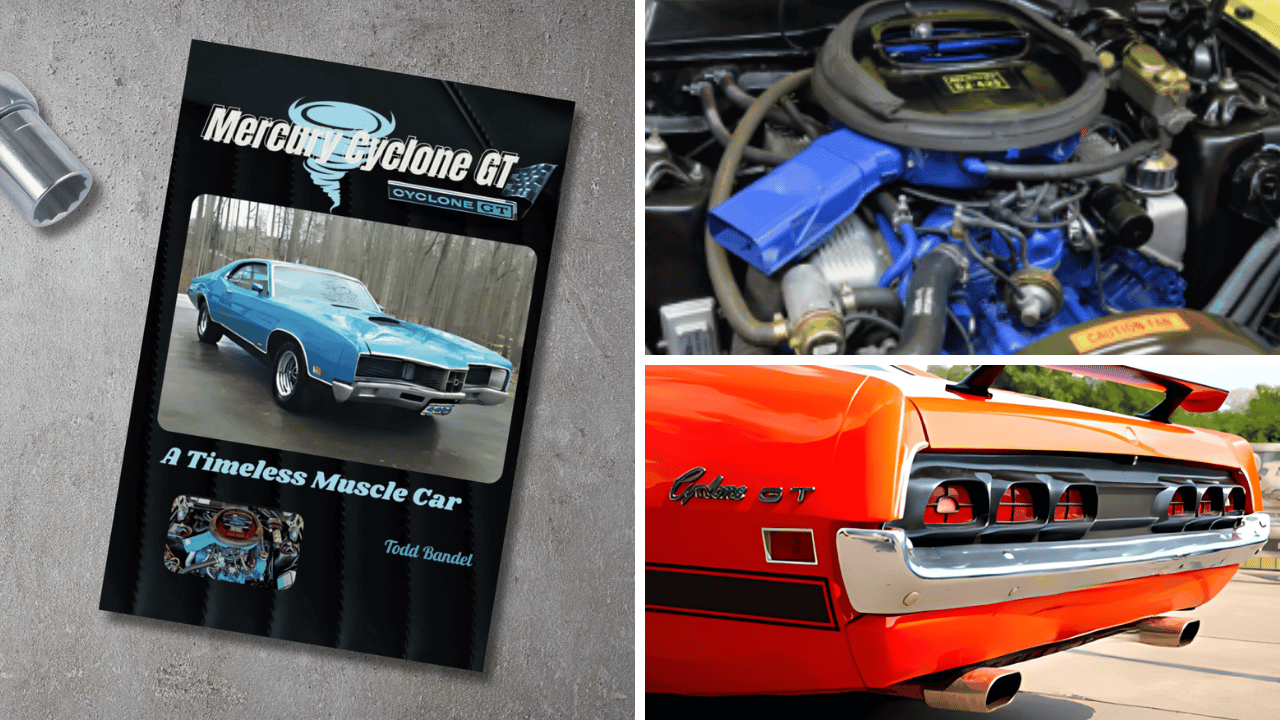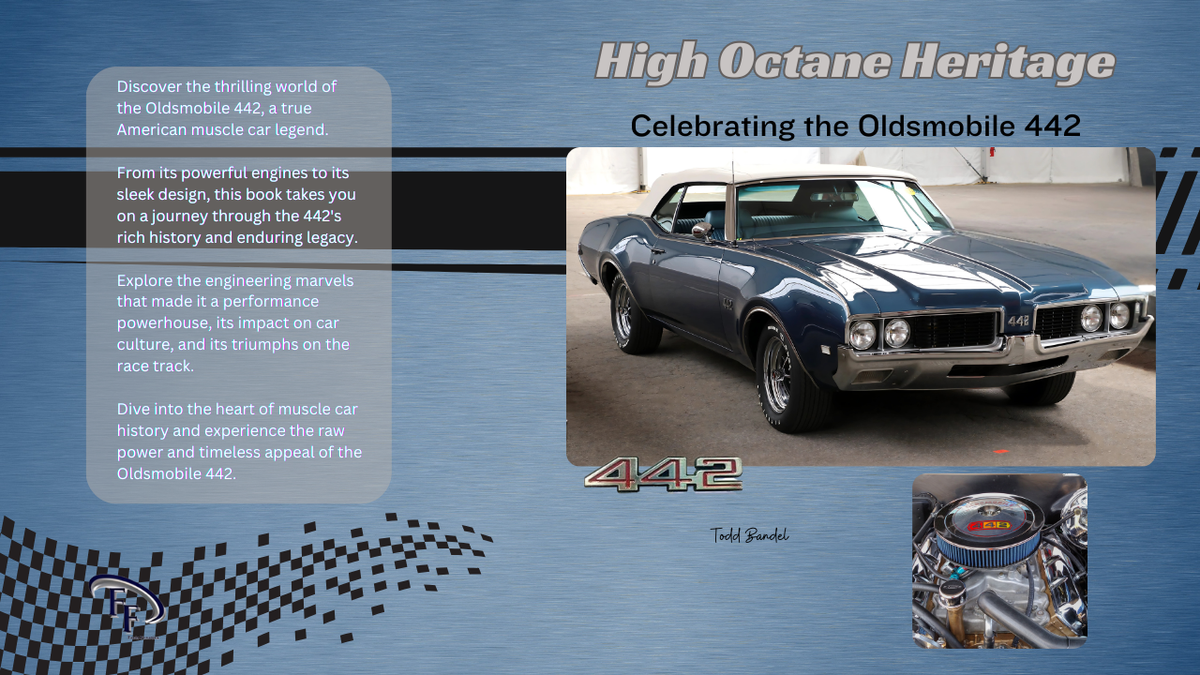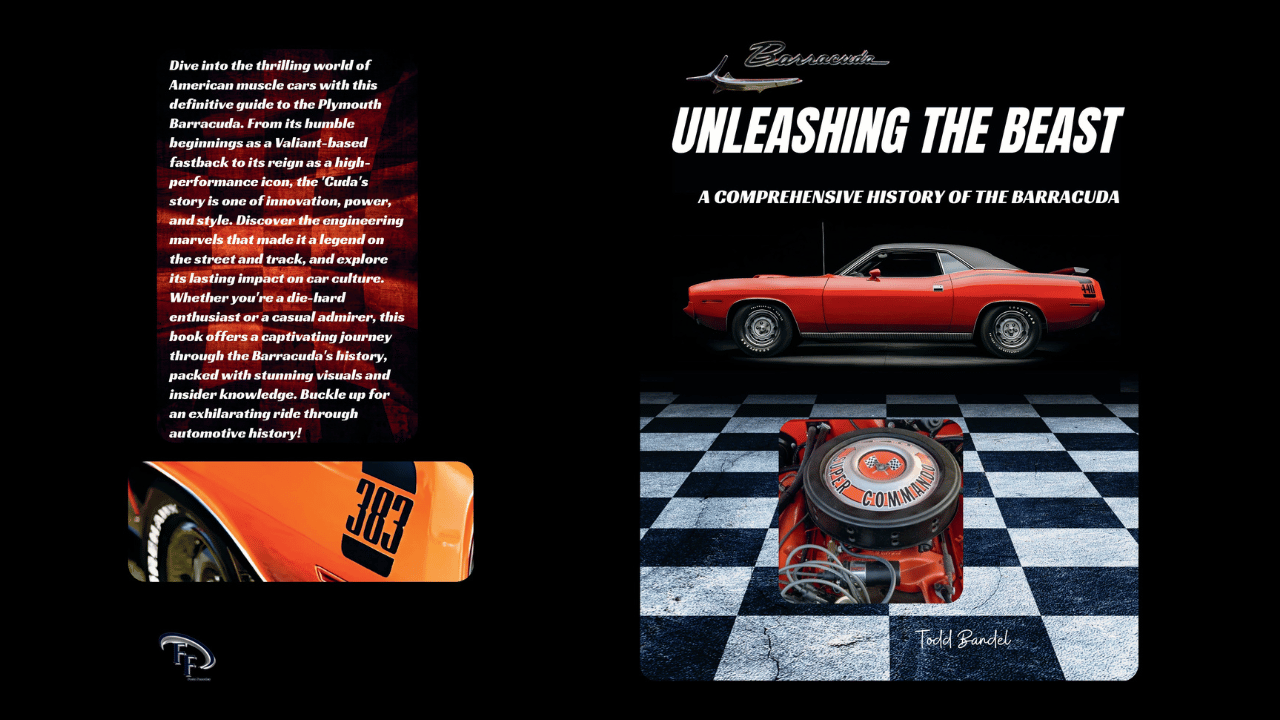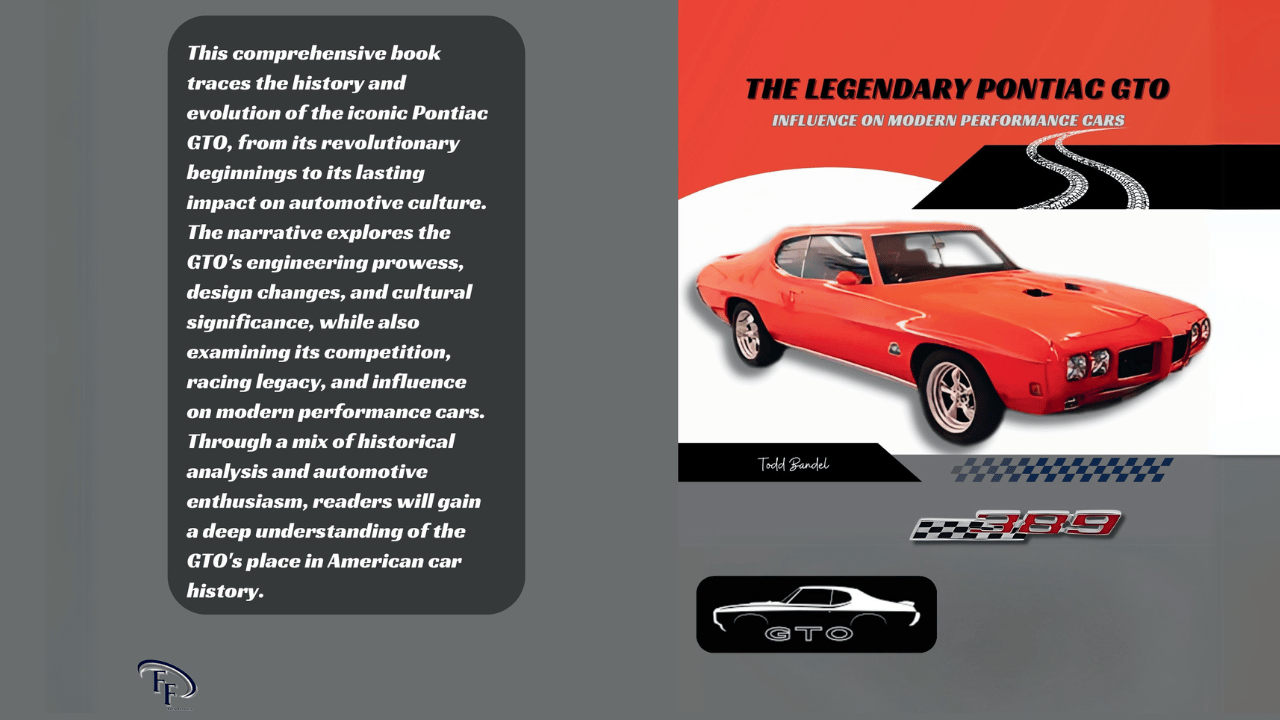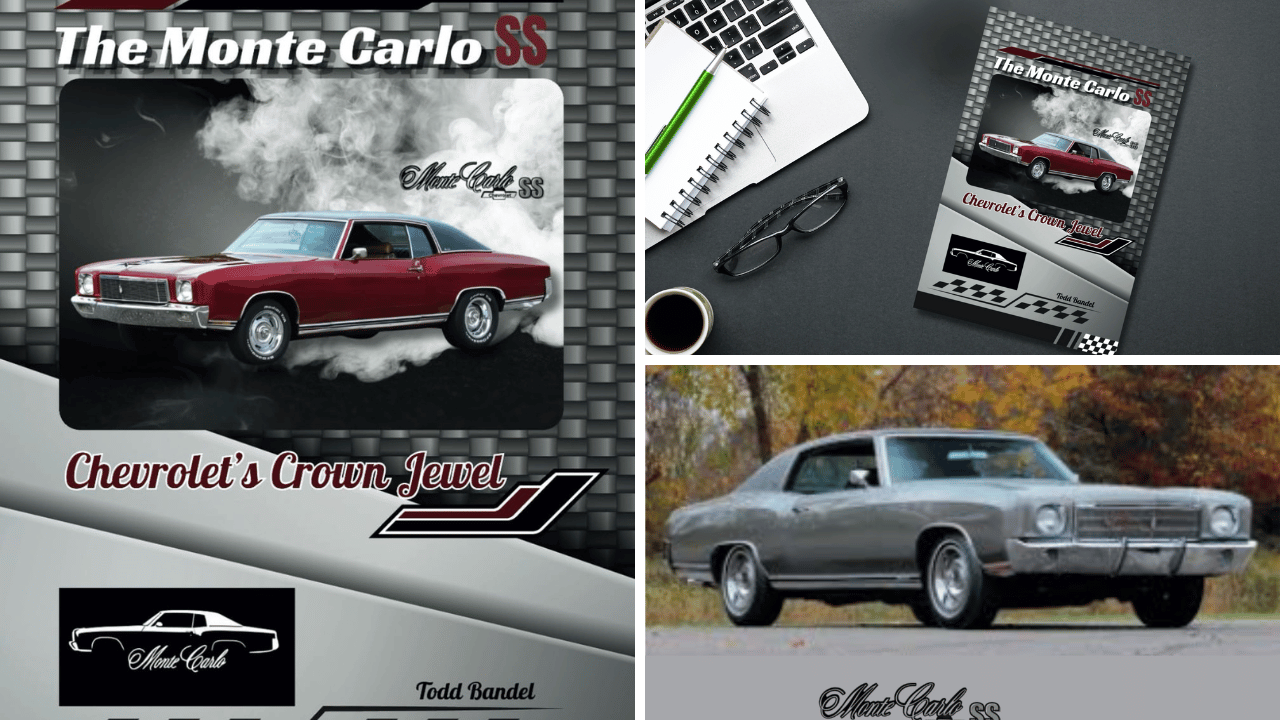AMC Javelin SST: Speed, Style, and Substance
The AMC Javelin was marketed as a Super Sports Touring vehicle, blending muscle car performance with a touch of refinement.
Welcome to Mechanicaddicts. As an Amazon Associate, we earn from qualifying purchases (at no cost to you) from links found within these pages if you choose to buy something.
The AMC Javelin SST stands as one of American automotive history’s most intriguing contradictions, a genuinely capable muscle car from a manufacturer better known for practical economy vehicles and other cars.
While Ford, Chevrolet, and Chrysler dominated the pony car wars of the late 1960s and early 1970s, American Motors Corporation carved out its distinctive niche with the Javelin, particularly in its high-performance SST configuration, offering an affordable alternative to the more expensive models from the Big Three.
This comprehensive review examines the Javelin SST through multiple lenses: its historical significance, design philosophy, performance credentials, and lasting impact on automotive culture, particularly in the context of each year it was produced. We’ll also explore Todd Bandel’s definitive book “AMC Javelin SST: Speed, Style, and Substance,” which provides unprecedented insight into this remarkable machine.
The Javelin SST represents more than just another entry in the muscle car pantheon of American cars. It embodies AMC’s bold attempt to compete with Detroit’s Big Three in a segment where brand loyalty ran deep and marketing budgets determined market share. Understanding the classic Javelin SST requires appreciating both its achievements and the challenging circumstances under which it was created.
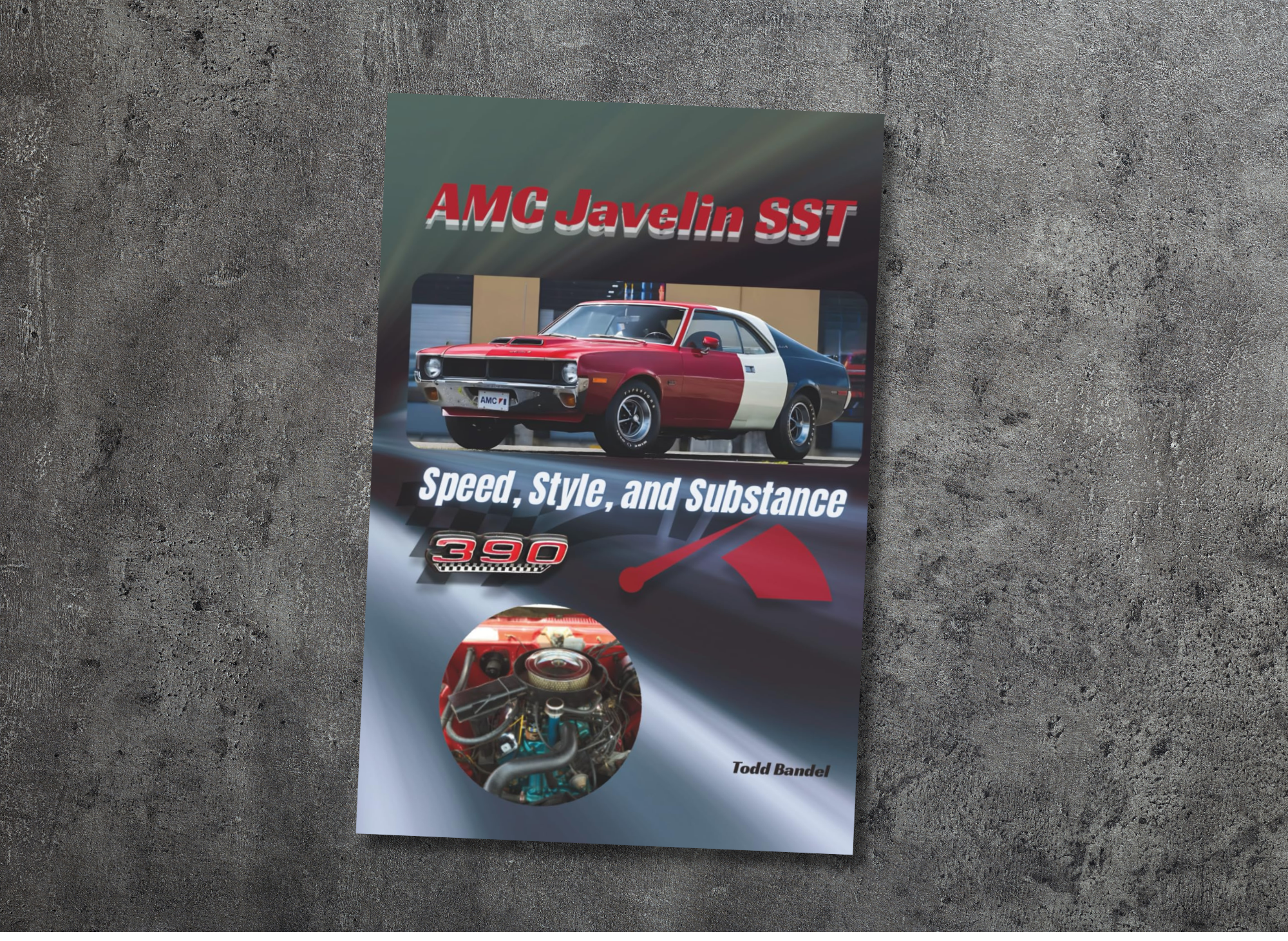
AMC Javelin SST: Speed, Style, and Substance
"Embark on a high-octane journey through the world of speed, style, and substance with AMC Javelin SST: Speed, Style, and Substance, where history roars to life and design's legacy hits the fast lane!"
The AMC Story: Setting the Stage for a Rebel
The story of the AMC Javelin begins with the American Motors Corporation, a company forged in 1954 from the merger of Hudson and Nash-Kelvinator. For years, AMC was known for building practical, affordable cars that prioritized economy over excitement. But as the muscle car era dawned and the Ford Mustang ignited a nationwide passion for performance, AMC recognized the need to break from its conservative roots.
Determined to challenge the dominance of Detroit’s Big Three, American Motors set out to create a car that would capture the spirit of the times, bold, fast, and stylish. The result was the Javelin, which debuted in 1968 as AMC’s answer to the muscle cars sweeping American streets.
With its aggressive stance, powerful engine options, and attainable price, the Javelin quickly earned a reputation as one of the most underrated muscle cars of its generation. Over its six-year production run, the Javelin proved that AMC could build a car to rival the best, carving out a unique place in automotive history.
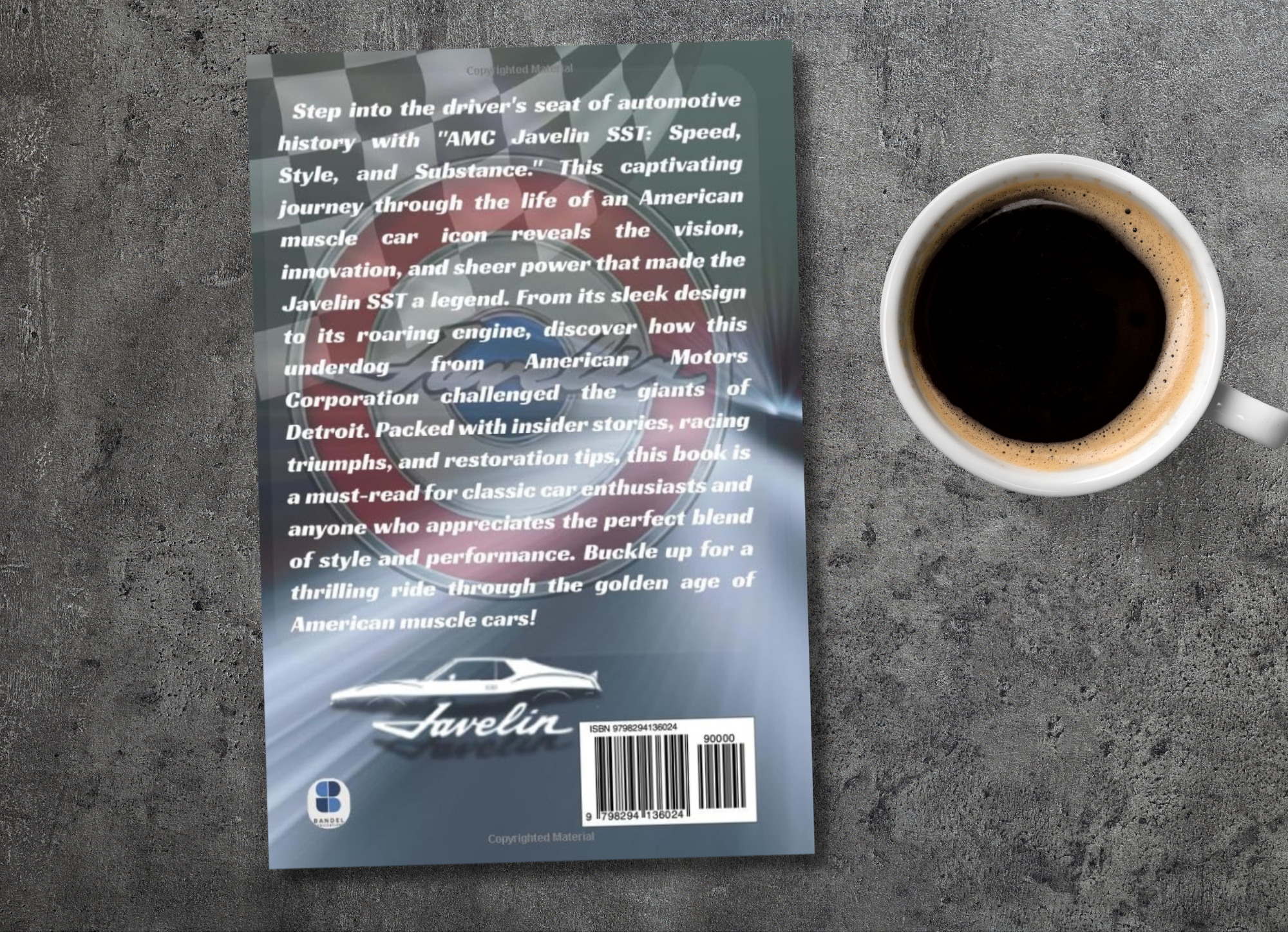
Historical Context: David Among Goliaths
The late 1960s marked the golden age of American muscle cars, with manufacturers engaged in an escalating horsepower war that captivated enthusiasts and drove showroom traffic. Ford's Mustang had established the pony car template in 1964, followed quickly by Chevrolet's Camaro and Chrysler's Challenger, and into this crowded field stepped AMC with the Javelin in 1968, marking a significant shift for the company at that time.
AMC faced unique challenges that its larger competitors didn't encounter. Limited resources meant every development dollar had to count, and the company's dealer network was significantly smaller than the Big Three, making the need for economical solutions essential. However, these constraints also fostered creativity and innovation, as each model was fitted with unique features to stand out in the competitive market. AMC couldn't simply outspend its rivals, so it had to outsmart them.
The muscle car era coincided with changing consumer preferences and emerging safety regulations. Young buyers wanted performance and style, while federal mandates began requiring safety equipment that added weight and complexity. The Javelin SST had to navigate these competing demands while establishing AMC's credibility in the performance market, which was also influenced by its vibrant color choices.
AMC's position as the fourth-largest American automaker provided both opportunities and limitations. The company had sufficient resources to develop serious performance vehicles but lacked the economies of scale that made high-volume production profitable. This reality shaped the Javelin's development and production throughout its lifespan.
The competitive landscape intensified annually as manufacturers introduced more powerful engines and aggressive styling updates. The Javelin SST had to evolve quickly to remain relevant, leading to frequent changes that sometimes confused buyers but demonstrated AMC's commitment to the segment.

Design and Styling: Form Meets Function
The AMC Javelin SST’s design philosophy balanced aggressive muscle car aesthetics with practical considerations regarding its body that reflected AMC’s engineering-focused culture. The exterior featured clean, purposeful lines that avoided the baroque excess that characterized some contemporary muscle cars.
Pierre Cardin influenced the Javelin’s interior design, bringing European sensibilities to American muscle car packaging. This collaboration resulted in cockpit layouts that prioritized driver ergonomics and featured distinctive color combinations and bold stripes, both inside and out, unavailable from other manufacturers. The SST trim level included unique interior appointments that distinguished it from base Javelin models.
Functional aerodynamic elements integrated seamlessly into the Javelin’s design language. The front air dam, rear spoiler, and side exhaust outlets served genuine performance purposes rather than existing purely for visual effect. This approach reflected AMC’s practical engineering philosophy and helped differentiate the Javelin from more style-focused competitors.
Color options played a crucial role in the Javelin SST’s market appeal. AMC offered bold hues like Big Bad Blue, Big Bad Orange, and Big Bad Green that made strong visual statements. These colors, along with distinctive doors and trims, became synonymous with AMC performance and helped establish the brand’s rebellious image among younger buyers.
Body proportions struck an effective balance between muscular presence and elegant restraint. The Javelin avoided the cartoonish exaggeration that affected some muscle cars, instead presenting a mature aesthetic that appealed to buyers seeking performance without ostentation. This design philosophy aged well and contributes to the car’s enduring visual appeal.
Functional details demonstrated AMC’s attention to performance requirements. Hood scoops fed air to the engine, rear window louvers improved aerodynamics, and wheel flares accommodated wider tires. These elements integrated naturally into the overall design rather than appearing as afterthoughts, and were never removed from the iconic look of the Javelin.

Performance and Engineering: Substance Behind the Style
The AMC Javelin SST’s performance credentials rested on a foundation of solid engineering rather than raw displacement alone. AMC developed specific powertrains for the SST that emphasized balanced performance across multiple driving conditions.
Engine options ranged from AMC’s capable 290 cubic inch V8 to the legendary 401 cubic inch big block that delivered genuine muscle car performance. The 401 produced substantial torque and horsepower, both rated using SAE standards, that provided strong acceleration while maintaining reasonable fuel economy for its era. This engine became the signature powerplant for serious Javelin SST enthusiasts.
Transmission choices included both manual and automatic options, with the four-speed manual being preferred by performance-oriented buyers. The Borg-Warner T-10 four-speed provided crisp shifts and durability under demanding conditions. The automatic transmission options catered to buyers who wanted performance without the complexity of manual shifting.
Suspension tuning reflected AMC’s focus on balanced handling characteristics. The Javelin SST featured firmer springs and larger anti-roll bars compared to base models, improving cornering ability without destroying ride quality. This approach appealed to buyers who drove their muscle cars rather than just displaying them, making it easy to see the performance benefits of the Javelin SST.
Braking systems received appropriate upgrades to handle the increased performance. Power disc brakes became standard equipment on SST models, providing stopping power that matched acceleration capabilities. This attention to balanced performance distinguished the Javelin from some competitors that prioritized straight-line speed over overall capability.
Performance testing revealed the Javelin SST’s well-rounded character. Quarter-mile times were competitive with established rivals, while handling tests demonstrated superior balance and control. These results validated AMC’s engineering approach and earned respect from automotive journalists who might have otherwise dismissed the car.
Under the Skin: Transmissions and Drivetrain
Beneath the Javelin’s striking exterior lay a robust selection of transmissions and drivetrain options that gave drivers the performance and control they craved. AMC offered both three- and four-speed floor-mounted manual transmissions, allowing enthusiasts to engage with the car’s muscle car character fully.
For those seeking a blend of convenience and sportiness, the innovative “Shift-Command Automatic” transmission was available, either on the column or the console. This early manumatic system let drivers manually select gears without a clutch pedal, providing a level of engagement rare among automatic transmissions of the era.
The Javelin’s front-engine, rear-wheel-drive layout was classic muscle car engineering, delivering the kind of power and handling that defined the segment. The engine lineup included potent V-8 options, such as the 5.6-liter (343-cubic-inch) V-8, which could be equipped with either a two-barrel or four-barrel carburetor, producing 235 or 280 hp, respectively. This range of choices ensured that every driver could find a Javelin tailored to their preferred balance of power, control, and everyday usability.

Special Editions and Racing Heritage
The AMC Javelin SST’s racing program provided crucial credibility and development feedback that improved production models. AMC’s Trans-Am racing efforts with drivers like Mark Donohue demonstrated the platform’s inherent capabilities and generated valuable publicity for the brand.
Special edition models like the Trans-Am homologation specials brought racing technology to showroom floors. These limited-production vehicles featured specific aerodynamic components, suspension modifications, and engine tuning that reflected lessons learned on the track. Collectors today prize these models for their rarity and authentic racing heritage.
The Big Bad series represented AMC’s most aggressive marketing effort for the Javelin SST. These models featured distinctive paint schemes, performance modifications, and aggressive styling elements that emphasized the car’s muscle car credentials. The Big Bad pack offered a unique combination of options and visual upgrades, helping to establish the Javelin’s performance image among younger buyers.
Factory drag racing packs catered to buyers who planned serious competition use. These options included specific engine combinations, transmission modifications, and weight reduction measures that optimized quarter-mile performance. AMC’s willingness to support grassroots racing efforts earned loyalty from serious enthusiasts.
International racing programs expanded the Javelin’s reputation beyond American borders. European and Australian racing efforts demonstrated the platform’s adaptability and helped establish AMC’s global performance credentials. These programs also provided valuable feedback for production model development.
Racing success translated into improved production models through technology transfer and engineering refinements. Lessons learned in competition influenced suspension tuning, aerodynamic development, and engine calibration for street cars. This direct connection between racing and production vehicles enhanced the Javelin SST’s authenticity as a genuine performance machine.
Across the Globe: AMC Javelins in International Markets
While the javelin AMX model was born on American soil, its appeal quickly spread far beyond U.S. borders. American Motors marketed the Javelin globally, with assembly taking place under license in countries like Germany, Mexico, the Philippines, Venezuela, and Australia.
The car’s international presence was further boosted by special discounts offered to U.S. military personnel stationed overseas, making the Javelin a familiar sight on foreign roads. Its reputation for reliability and performance even led to its adoption as a standard highway patrol car by an American law enforcement agency, a testament to its muscle car credentials.
In markets around the world, the Javelin stood out for its distinctive styling and impressive engine power ratings, often drawing favorable comparisons to rivals like the Ford Mustang. Whether cruising European highways or patrolling city streets, the Javelin’s blend of American muscle and unique design made it a standout among global performance cars.

Rare and Unique Javelins: Hidden Gems of the Lineup
Among the many AMC Javelins produced, a handful of rare and special editions have become true collector’s treasures. The 1970 AMC Javelin SST Trans Am Edition, for example, wore a bold patriotic paint scheme and packed a 325-hp 390-cubic-inch V-8 under its hood, making it a standout both in looks and performance.
Another highly sought-after model is the Mark Donohue Special Edition, built from January to April 1970. This edition featured the 360 Go Package, a functional Ram Air hood, and exclusive SST interior and exterior trim, all inspired by the legendary Trans-Am racing champion.
For those with an eye for design, the Pierre Cardin Edition offered a truly unique interior, with pleated upholstery and a dramatic striped pattern set against a black background, an unmistakable mark of 1970s style. These special editions, with their limited production numbers and distinctive features, represent the hidden gems of the Javelin lineup, embodying the creativity and performance spirit that AMC brought to the muscle car era.
Restoration and Maintenance: Keeping the Legend Alive
Restoring and maintaining an AMC Javelin is both a rewarding challenge and a tribute to American muscle car heritage. Owners dedicated to authenticity focus on preserving original features, from the potent engine lineup, including the largest 401-cubic-inch V-8, to the signature SST trim and functional Ram Air hood.
Regular maintenance of key components like disc brakes, heavy-duty suspension, and dual exhausts is essential to keep these classic cars performing at their best. Attention to detail extends to the interior, where unique trim pieces and period-correct finishes help maintain the car’s nostalgic charm.
Sourcing original or high-quality reproduction parts can require patience. Still, the result is a Javelin that not only looks the part but delivers the driving experience that made these cars legendary. By honoring the engineering and design that defined the Javelin, today’s enthusiasts ensure that AMC’s boldest creation continues to turn heads and inspire admiration for generations to come.

Collectibility and Market Value
The AMC Javelin SST has experienced significant appreciation in collector car markets as enthusiasts recognize its unique position in muscle car history. Rarity, combined with genuine performance credentials and distinctive styling, has driven increased interest among serious collectors looking for a similar vehicle.
Market values vary significantly based on specific model year, engine configuration, and condition. Early production models with rare options command premium prices at sale, while more common configurations remain accessible to entry-level collectors. This range provides opportunities for enthusiasts with different budgets and collecting goals.
Restoration challenges reflect the Javelin’s unique position in automotive history. Some parts remain available through specialized suppliers, while others require custom fabrication or careful searching through salvage sources. This situation demands careful evaluation before purchasing project vehicles.
Authentication becomes crucial when evaluating potential purchases, as the rarity and value of specific configurations have led to tribute cars and incorrect restorations. Understanding factory codes, option combinations, and production details helps buyers avoid costly mistakes and ensures authenticity in terms of collector value.
Investment potential appears strong based on increasing recognition of AMC’s contributions to automotive history. As mainstream muscle cars continue appreciating, the Javelin SST benefits from its undervalued status and growing collector interest. However, buyers should prioritize personal enjoyment over investment returns.
Condition evaluation requires specific knowledge of common problem areas and maintenance requirements. Rust issues, mechanical wear patterns, and parts availability all influence long-term ownership costs, and in addition, the model's rarity plays a significant role. Prospective buyers benefit from consulting knowledgeable enthusiasts or specialists before making purchasing decisions.
"AMC Javelin SST: Speed, Style, and Substance"
Todd Bandel’s comprehensive examination of the AMC Javelin SST represents the most thorough documentation of this vital muscle car to date. Drawing on his 38 years of automotive industry experience, Bandel provides insights that combine technical expertise with genuine enthusiasm for the subject matter.
The book’s structure follows a logical progression from historical context through technical specifications to cultural impact. This organization helps readers learn not just what the Javelin SST was, but why it mattered in the broader context of American automotive history. Bandel’s approach respects both casual enthusiasts and serious students of automotive design.
Exclusive interviews with original designers, engineers, and marketing personnel provide firsthand perspectives unavailable elsewhere. These conversations reveal decision-making processes, technical challenges, and market realities that shaped the Javelin’s development. Such primary source material elevates the book beyond typical automotive histories.
Rare photographs document design evolution, production processes, and period marketing materials that illustrate the Javelin’s place in AMC’s broader strategy. These images include previously unpublished factory shots, prototype studies, and racing photographs that provide visual context for the written narrative.
Technical analysis demonstrates Bandel’s deep understanding of automotive engineering principles and manufacturing realities. His explanations of design decisions, performance characteristics, and production challenges help readers appreciate the complexity involved in creating competitive muscle cars with limited resources.
The book’s treatment of the Javelin’s cultural significance extends beyond mere nostalgia to examine its lasting influence on automotive design and enthusiast culture. Bandel’s analysis helps readers understand why certain design elements and engineering approaches continue influencing contemporary vehicles.
Case studies of specific vehicles, restoration projects, and racing applications provide practical information that benefits current owners and prospective buyers. These detailed examinations demonstrate how theoretical knowledge translates into real-world ownership experiences and maintenance requirements.

Preserving Automotive Heritage
The AMC Javelin SST's story illustrates broader themes about innovation, competition, and corporate identity in American manufacturing. Its legacy extends beyond pure performance statistics to encompass lessons about brand differentiation, market positioning, and engineering excellence under resource constraints.
Understanding the Javelin SST requires appreciating AMC's unique corporate culture and the specific challenges facing independent automakers during the muscle car era. This context helps explain design decisions, marketing strategies, and production realities that shaped the car's development and market reception, which continue to influence perceptions of muscle cars.
Todd Bandel's "AMC Javelin SST: Speed, Style, and Substance" serves as an essential resource for anyone seeking to understand this vital vehicle's place in automotive history. The book's combination of technical detail, historical context, and cultural analysis provides a comprehensive foundation for appreciating the Javelin's significance.
For enthusiasts considering Javelin SST ownership, Bandel's work offers practical guidance about model selection, restoration challenges, and maintenance requirements. This information proves invaluable for making informed purchasing decisions and planning successful ownership experiences.
The growing recognition of AMC's contributions to American automotive history ensures that vehicles like the Javelin SST will continue to appreciate in both collector value and cultural significance. Books like Bandel's help preserve essential knowledge and inspire new generations of enthusiasts by offering insights into how to enjoy these remarkable machines.
Whether you're a longtime muscle car enthusiast or someone discovering AMC's performance heritage for the first time, Todd Bandel's comprehensive examination of the Javelin SST provides the essential information needed to understand and appreciate this distinctive American icon.

American Motors' Muscle cars gained a seat at the table.
The AMC Javelin debuted as a stylish and sporty offering from American Motors, aimed at competing with the muscle cars of the late 1960s and early 1970s. The base Javelin was designed to appeal to a wide range of buyers, offering a balance of performance and affordability.
For those seeking more power and luxury, AMC called their higher-performance version the AMX, which featured a more aggressive design and a robust engine lineup. Buyers could choose from a variety of engines, including the largest engine available, which came with dual exhausts and a two-barrel carburetor for added performance.
The Javelin offered a choice between a four-speed manual transmission and a three-speed automatic transmission, with the latter featuring AMC's innovative Shift Command system. For those who wanted better traction, the Twin Grip limited-slip differential was available, making the car more capable in challenging driving conditions.
The base model came with standard features like comfortable front seats. At the same time, higher trims, such as the SST trim, added more luxurious touches like air conditioning, power steering, and even an optional FM radio for entertainment on the go.
In terms of design, the Javelin stood out with its bold styling, which included optional rear spoilers, power blister hoods, and chrome bumpers. The frost white paint option was particularly popular, giving the car a clean and striking appearance. For those who wanted a more exclusive look, AMC collaborated with a fashion designer to create unique, limited-edition models that added a touch of sophistication to the sporty car.
The AMX SST models were the pinnacle of performance in the Javelin lineup, offering features like disc brakes for improved stopping power and a more aggressive stance.
AMC estimated strong sales for these models, and they were particularly popular in states like California, Georgia, and Pennsylvania, where dealers reported high demand. They certainly gained a seat at the table for muscle cars.
As the Javelin AMX models entered their final year of being offered and sold, some features were dropped to streamline production, but the car remained a favorite among enthusiasts. The luxury touches and performance options, combined with its affordability, made it a standout in the muscle car era.
Whether it was the base model or the high-performance AMX, the Javelin left a lasting impression on the automotive world, putting American Motors on the map as a serious contender in the muscle car market.
Thank you for reading!
Your friend,
Todd
#AMCJavelin #ClassicMuscleCar #AMXModels #AmericanMotors #VintageCars #MuscleCarLove #JavelinSST #CarEnthusiast #RetroRides #AMCLegend
🚗 🏁n🔥 💨 🛞 🏎️ ✨ 🇺🇸🚦 🛠️
Amazon Prime offers a wide range of products designed to cater to diverse customer needs, all with the added benefit of fast, reliable delivery. From household essentials and groceries to electronics, clothing, and entertainment, Prime members get access to exclusive deals and discounts across various categories.
Additionally, Prime membership includes access to services like Prime Video for streaming movies and TV shows, Amazon Music for ad-free music, and Prime Reading for eBooks and magazines. This comprehensive suite of benefits makes Amazon Prime a convenient and value-packed option for millions of customers worldwide.
- Prime for you, adult
- Free 30-day trial of Prime
- All of Prime, half the price.
- Prime Video
- wedding registry
- Kindle Unlimited
- Amazon Music
- Amazon Fresh Groceries
